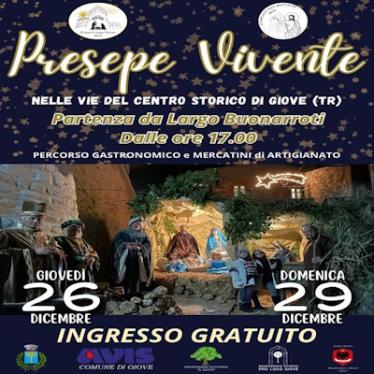HISTORY
In the Roman Age the hamlet was of great importance because of the river port of San Valentino sul Tevere, as proved by the numerous archaeological finds discovered there: coins, tombs and ruins of Roman villas.
Neighbouring fiefs and the Giove district and castle, due to its position, were contested for many years by nearby communes, the Lords of Alviano and the Papal States, until 1328 when Pope Urban VI assigned it to the Anguillara family, thereby removing it from the dominion of Orvieto. In 1465 the inhabitants of Amelia occupied the castle and gave it to Paolo III Farnese whose family held it until the 16th century when the Mattei Seigniory took it over and had a stately ducal palace built there.
ART AND CULTURE
The historical centre is a classical example of medieval urban layout, still seen in the town walls and several towers.
On the gateway to the hamlet, known as Borgo Vecchio (Old Town), Saint Bernard's "IHS" monogram was engraved in honour of his evangelisation of these lands in the early 15th century.
The most well-known monument is Palazzo Ducale, the imposing ducal palace built on a square plan with two mighty corner towers, started in the 16th century in accordance with Duke Ciriaco Mattei's wishes to turn the medieval castle into a private residence. The reception rooms are decorated with mythological paintings attributed to Domenichino and religious paintings attributed to Alfani and Paolo Veronese. The palace belonged to Counts Acquarone until 1985, and is now the private residence of American film producer Charles Band.
An interesting fact: the building has 365 windows – one for each day of the year.
The parish church is of interest for the precious canvas of the Assunta attributed to Niccolò di Liberatore, called Alunno. Also worthy of a visit is the Chapel of San Rocco with 16th century frescoes depicting holy scenes painted by the Foligno School. On 21st September 1969 the chapel was named the Memorial to Fallen Soldiers from all Wars.




























